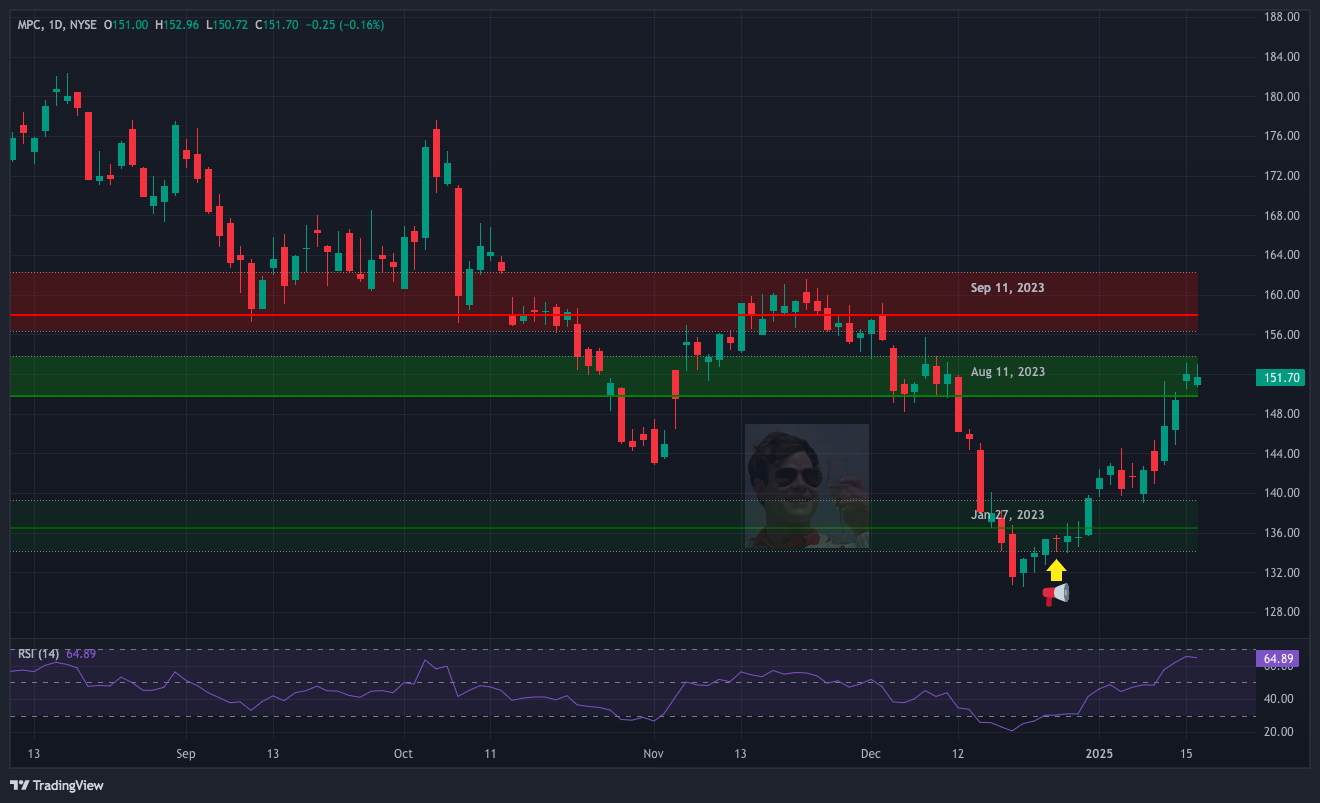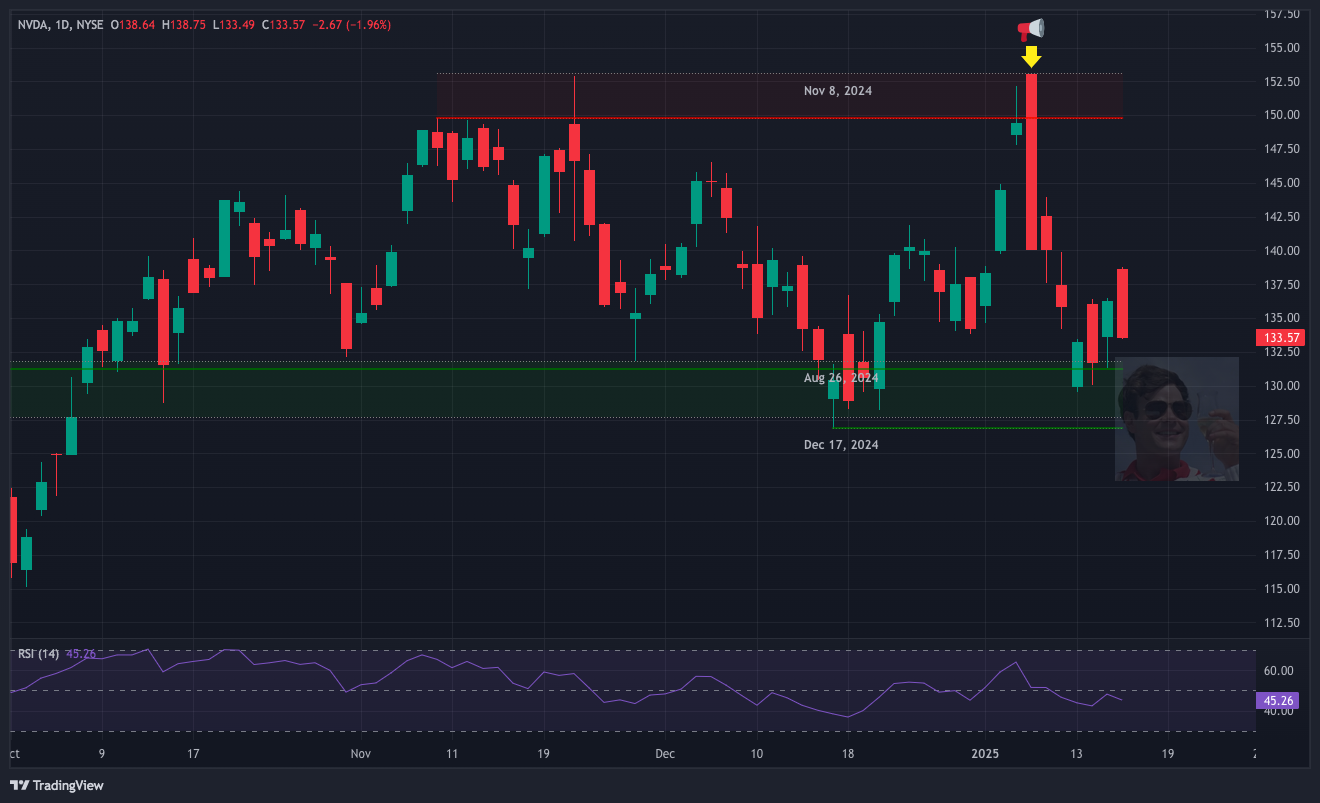Recapping past zones (17 Jan 2025)
A follow-up to our weekly zone alerts
Hey folks!
We’ve got some updates to our Substack releases.
Starting today, in addition to our weekly zone alerts and educational content, we’re going to have one issue dedicated to analyzing past zone alerts flagged by our scanner.
In this issue, we’re revisiting a few of our standout zone alerts: two from our December 27 newsletter, one from January 7—all of which turned out to be pretty solid tradable opportunities.
In case you’re new here, every week we highlight stocks nearing or entering Hot Zones, i.e. key levels on the charts with high risk-reward setups. Subscribe to stay updated!
Check out our most recent zone alerts:
CVS Health Corp. (CVS)
Healthcare • Healthcare Plans • USA • NYSE
Zone alert: December 27, 2024
CVS hit our radar when it landed on a prehistoric support zone carbon-dated all the way back to 2012. Moreover, it was at an RSI level that has, more often than not, triggered significant price jumps.
Since our alert, the stock has blasted through yet another 2012 zone…
and is currently up by a cool 15% as of writing.
Though not significantly overbought yet, MPC’s RSI has been heating up. So we could expect some stagnation around the Jan 2013 zone for the time being.
Marathon Petroleum Corp. (MPC)
Energy • Oil & Gas Refining & Marketing • USA • NYSE
Zone alert: December 27, 2024
Testing MPC’s Jan 2023 zone is an exercise in futility. Historically, whenever price approaches it—whether as a resistance or a support—a wild bounce follows.
And this instance has so far not been an exception.
Our scanner flagged MPC when it closed near the bottom of the zone. The stock had just recovered from a near-breakdown, RSI was still in the low 30s, and the reward-risk ratio was at a tasty 3+ to 1.
Right now, MPC is up by around 12%. A textbook zone-to-zone move if we ever saw one.
Nvidia Corp. (NVDA)
Technology • Semiconductors • USA • NASD
Zone alert: January 7, 2025
We apologize if this pain is still fresh to most of you.
NVDA was on the verge of new ATH when good news hit it in a bad way. Despite a strong showing at CES 2025, NVDA tanked hard, reversing a lot of traders’ sentiments on the stock.
We saw it making a sharp -6% dip down to its Aug 26 zone, and after a couple days— sure enough…
it did.
We know some of you bears out there were hoping the zone would break and cause the stock to plummet 30%.
But, what can we say… It’s the age of AI, baby. The zone held.
“But wait… who are you people and what am I doing here?”
Welcome to Trading Places.
We’re just a bunch of market nerds, quants, and posers who’ve stared at enough charts we dump our portfolios at the sight of a menorah.
After years of convincing ourselves that the lines and shapes we were plotting actually meant something, we finally figured it was time to upgrade our shtick a tiny bit.
So now, we get quant intelligence to do it for us.
We built an algorithm that’s deaf to the market’s siren songs. It cuts through the BS and pinpoints Zones of interest, i.e. places on the chart where actual money comes to dance.
Think of it as a Limitless pill for your stock, currency, and crypto plays—scanning the markets in real-time and determining where the action’s at.
WTF are Zones, anyway?
Zones are key price levels where the market has reacted strongly in the past—such as sharp reversals or sudden swings.
They’re areas where actual supply and demand met in the past, and likely will meet again.
“Why are these significant?”
Well, it all comes down to three key principles. We like to call them The Principles of:
When I Dip, You Dip, We Dip (aka psychology)
Traders are aware that others are watching these levels (zones) too. With everybody paying attention, this creates a self-fulfilling prophecy where everybody acts in anticipation of everybody else’s actions.
Markets Gonna Market ¯\_(ツ)_/¯ (aka technical factors)
If the first price rejection at the top of a zone was violent, it’s likely that buyers who entered at that level are now holding losses.
But with each retest, the rejection weakens, as there are fewer buyers remaining underwater. This weakens that resistance (or support for all you short-sellers), and could eventually lead to a break through.
Killer Whales (aka institutional plays)
Big players need liquidity in order to place massive orders without moving the market against themselves. So they wait for these zones, knowing a lot of us small fry (retail traders) will come to play.
This allows them to buy low or sell high without causing a lot of waves.
Remember: Zones are NOT guarantees but rather regions of increased probability for market moves. So always, ALWAYS use proper risk management.
Trading Places: Launch coming soon!
Stop obsessively refreshing your charts like it’s your ex’s Instagram.
By combining historical patterns with real-time market data, Trading Places identifies zones and assigns probabilities to each one—helping traders spot potential plays with higher chances of success.
It automates all of the curation, chart-plotting, and alerting for you, so you can actually have a life (or at least pretend to)!
Stay tuned!
Disclaimer: This isn't financial advice. This shouldn’t be news to you.









